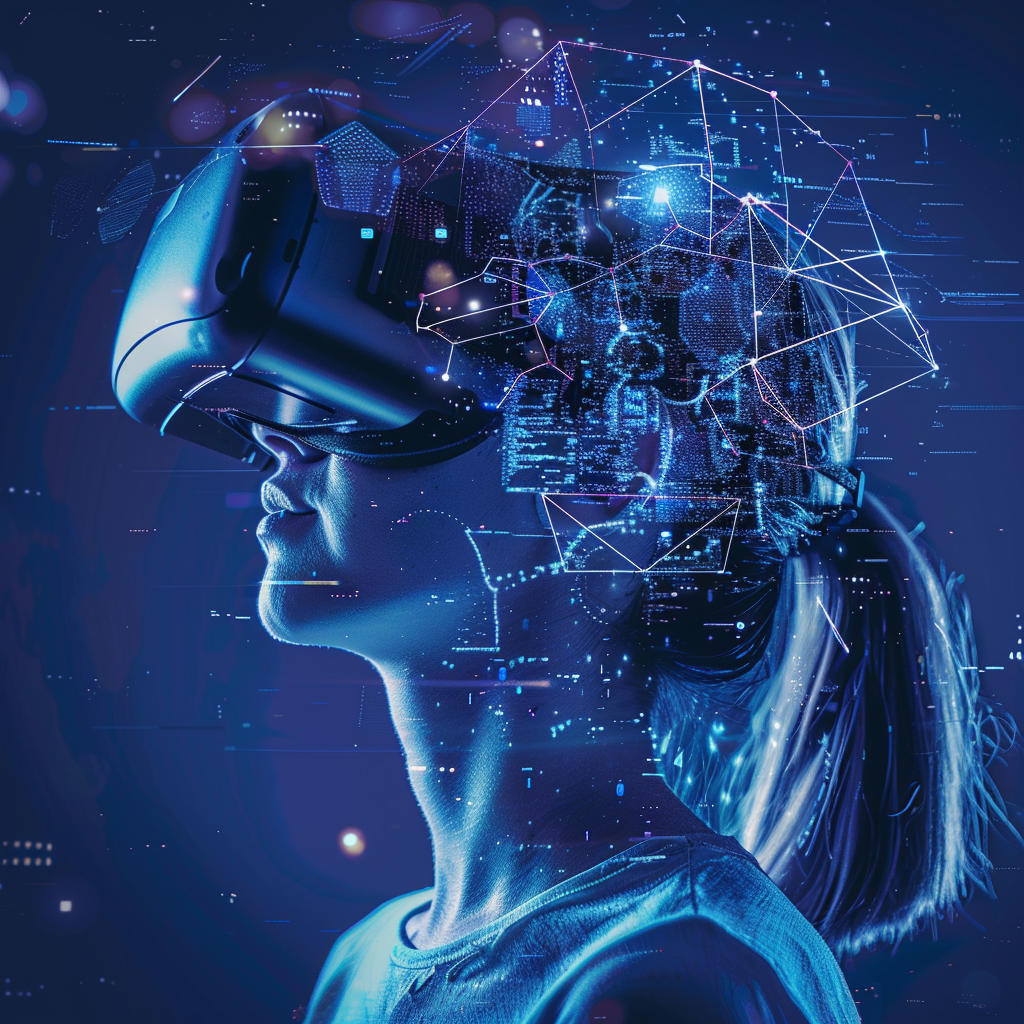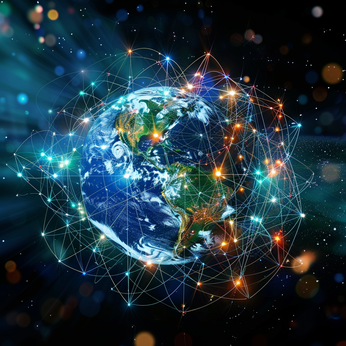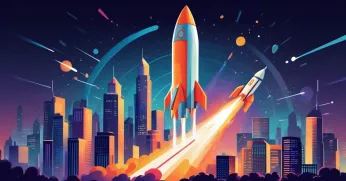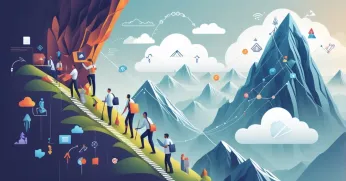
NFTs’ Impact Can Reach Far Beyond Expensive Digital Art
According to the NFT Report 2020, published by L’Atelier BNP Paribas and Nonfungible.com, the value of the NFT market grew by 299 percent in 2020 to top $250 million. That’s nothing: it was $208M in March 2021 alone and topped $2 billion in the first three quarters this year.
Star Trek legend and blockchain advocate, William Shatner, made and sold a non-fungible token (NFT) of an X-Ray of his teeth.
The entrepreneur known as MetaKovan paid $69million to the digital artist known as Beeple for an NFT of "Everydays The First 5000 Days," a collage of Beeple’s works. The price confounded many because anyone can view and copy the image for free. And, in an acrobatic display of recursive journalism, The Economist auctioned off an NFT for its September 18, 2021 cover art characterizing the NFT market and donated the $400,000 proceeds to a charity that teaches young people how to study current events.
It is very early days for NFTs, and they hold as much confusion as they do potential.
Most people don’t realize that buying an NFT doesn’t give you ownership of the digital property.
Most people are not aware of projects to use NFTs for physical objects and personal identification.
NFTs most potent uses will no doubt take us by surprise.
The NFT Market is Skyrocketing
According to the NFT Report 2020, published by L’Atelier BNP Paribas and Nonfungible.com, the value of the NFT market grew by 299 percent in 2020 to top $250 million. That’s nothing: it was $208M in March 2021 alone and topped $2 billion in the first three quarters this year. You can track it in real-time here.
The Tyranny of Jargon
Much of the confusion and mystery surrounding NFTs comes from the strained nomenclature and whimsical names of the technologies and principal actors.
In studying NFTs, one encounters terms like DAO, MANA, Wallet, and dapps. There are virtual worlds, including Cryptovoxels and Decentraland, and individuals with names like “Twobadour.” In Decentraland, MetaKovan can move MANA between Ethereum and Polygon.
Any questions?
MetaKovan’s physical world identity is Vignesh Sundaresan, a young fellow in Singapore. He paid the $69million in Ethereum’s currency, Ether or ETH, to Mike Winkleman, the talented South Carolinian whose pseudonym is Beeple.
MetaKovan was also responsible for 2019’s biggest NFT purchase: $111K for a digital Formula-1 racer. It probably has more utility than a physical collector vehicle. MetaKovan can race his trophy car without a worry in the game, F1® Delta Time. In contrast, rare physical automobiles are typically hidden in garages and periodically trucked to shows and auctions.
NFTs Decrypted
Let’s decrypt “non-fungible token” into everyday language. Start with businesses using physical tokens. Often coin-like, tokens make it easy for customers to use facilities and services. Many transit systems use tokens.
Photo by BajanZindy - Own work, CC BY 3.0
Chuck E Cheese, the family food and entertainment center, uses tokens. Customers exchange money for tokens, then play games by inserting tokens into game machines. Tokens grant access to the games. Kids find it easier to use the games because they all work with the same tokens.
Those tokens also make it easier for Chuck E Cheese to operate the games and for parents to spend money at the establishment.
Image: outletpro from Winter Springs, USA, CC BY 2.0, via Wikimedia Commons
Photo: Fox Totorus, CC BY 2.0 <https://creativecommons.org/licenses/by/2.0>, via Wikimedia Commons
The games don’t care which of your tokens you drop in the slot. The Chuck E Cheese coins are identical and interchangeable: they are “fungible.” So, Chuck E Cheese coins are fungible tokens on the Chuck E Cheese platform.
At most hotels, you use a token, and it’s programmable: your room key. The key is non-fungible: it will open only your room, and your room’s lock will only open for that key (if the front desk staff did their jobs). Your key is a programmable, non-fungible token for access to your room.
If that hotel room is the $30K/night Grand Riad at the Royal Mansour in Marrakech, you may want to post selfies on Instagram. That token comes with bragging rights.
NFTs like the one Beeple created are digital, just lines of software. They have some significant advantages over your room key. One is that instead of only bestowing access to something physical, albeit exquisite furniture and a world-class view, they can be programmed to hold rights and documentation for all types of assets. For example, you can make an NFT for a song, documentation for ownership of a boat, a university degree, an impressionist digital video of your teeth, or a lock of Lady Gaga’s hair (a cash crop).
Your hotel room key doesn't contain information about who last owned the rights to your room or how much they paid. Today's digital NFT holds the complete and unchangeable history of who created it, who it was sold to, when, and the price. Provenance is built in.
Another profound advantage is that the digital NFT, those lines of software, can be program-like themselves. For instance, an artist can create an NFT of her work that automatically sends her a percentage every time it is sold. Suppose that Beeple's NFT remitted him 10% of every resale. If MetaKovan sells the NFT for $100M, Mike Winkleman will receive $10M for his talent, creativity, and effort. It's like writing your own credit card reward program: you control the rewards for your work.
Think of an NFT as a programmable, custom title and record for some sort of asset.
When I ran my description of an NFT past a Silicon Valley colleague, she replied, "Why don't you just call it what it is, a smart contract." A linguistic bubble stretches from San Francisco to San Jose, where the assumption is that every educated person on and off-planet understands the term “smart contract.”
What Can You Do with NFTs?
Here’s a quick review of some compelling NFT features and benefits:
- NFTs are software that runs automatically. When all of the terms are met, like payments, it executes. There’s no need to wait for a notary public stamp or a settling period on a stock exchange.
- NFT’s virtually impossible to forge or alter. (NFTs are stored in blockchain databases, which is one of their features. If you want to know more about blockchain databases and how they work, here is a great explanation.)
- The NFT’s ownership record, the detailed lineage from the NFT’s creation through every single sale or transfer, lasts forever (Another excellent blockchain property).
- The ownership record is publicly viewable (Yet another blockchain benefit).
NFT’s broad applicability has entrepreneurs working on a plethora of application areas including:
- Fashion, to document a garment’s provenance and supply chain
- Virtual worlds and gaming, where NFTs started and still find their leading utility. The owners of expensive art NFTs hang their prizes on the walls of virtual galleries in worlds like Decentraland.
- Physical-world access, like tickets to events.
- Web domain names.
Some NFT Misconceptions: Caveat Emptor
If you buy an NFT for digital art, do you own the art? You will only if that’s what the terms in the NFT say. The seller does not need to grant copyright. As with any contract, always read the fine print.
MetaKovan’s NFT for Everydays The First 5000 Days does not include the copyright. The artist has, in fact, already sold an NFT for one component of the collage titled “Ocean Front” for another $6million. MetaKovan can resell the Everydays The First 5000 Days NFT, but only Beeple can create and sell NFTs of its 5000 parts.
In October 2020, The NBA debuted “Top Shots.” It is a collection of NFTs of video clips of famous players and plays called "Top Shot Moments." When you buy a Top Shot Moment:
- You get the digital token to that video.
- You can show publicly that you own the token to the video.
- You don’t get the copyright to the video.
- You can't use the footage for commercial purposes.
- You can’t resell an altered version of the video.
- The NBA could always make more of a Moment with different camera angles, etc. You are trusting that they will not do that.
In just six months, Top Shots transactions topped $527million. Most are secondary market resales, and the NFTs automatically remit 5% of every resale to the NBA. The NBA's NFT foray has helped legitimize the NFT concept and market.
Both Everydays and Top Shots videos are available for free online. So why pay for the same video of a LeBron James dunk that you can watch on YouTube? Here, novel technology meets legacy human psychology: technology changes rapidly, humans not so much.
It Sold for How Much??
The venerable auction house, Christie's, knows all about how humans value collectibles. Christie's auctioned Everydays The First 5000 Days in February 2021. In May, they offered another “important” collection of web art: a set of CryptoPunks. Their promotion show why collectors paid $17 million for low-resolution cartoon images: provenance, rarity, importance, and clear title, the collectors’ touchstones. That's how the NFT for animation with 187M YouTube views ("Nyan Cat," a flying cat with a Pop-Tart body spewing a rainbow trail) sold for nearly $600,000.
I predict that enrollment in digital art classes will skyrocket.
NFTs Beyond Art and Speculation: Social Impact
Exploding digital art prices have grabbed the headlines. However, NFTs may have profound potential to solve identity, land ownership, and association, nagging social problems.
The Case of Missing Identity
You have severe problems if you don't have official, government-issued identification:
- You cannot legally hold a job
- You cannot have a bank account
- You cannot go to school
- Your ability to travel is severely restricted
Those most likely to lack identification are the poor and refugees; the numbers are enormous. For example, the UN Refugee Center estimates 26.3 million people were international refugees in 2020. According to the ACLU, in the wealthiest nation in human history, 21 million Americans lacked a government-issued photo ID in 2017.
Identification is so fundamental that the UN’s Sustainable Development Goals (SDGs), target 16.9, calls on all countries to achieve legal identity for all by 2030.
Fragile papers like birth certificates, the foundations of official identification, are easily lost or destroyed. For example, suppose a homeless person with no ID tells a social worker that he is John, 36, with a degree in civil engineering. It might take months and dozens of forms to prove and restore John's identity. In that time, struggle to survive in society's detritus, John may join what one worker calls "The Disappeared.”
Suppose John owns an NFT holding his official identification. It has provenance traceable to a legitimate government authority. Its contents are indelible and accessible to anyone to whom John grants permission. It would lift an awful burden from John and those determined to help him.
Digital identity expert, Kaliya Young, recently noted that NFTs may not be the optimum solution for credentials like passports and academic records. However, competing initiatives are underway, such as the EU’s Digital Identity proposal. With young technologies, it is essential to experiment with use cases and choose the solution that best fits the users' needs.
Land Title
Land is a cherished and valuable possession, especially for farmers—however, many small land-owning farmers, “smallholders,” lack documented title to their property. It is a global challenge: four-fifths of the developing world’s food is a product of small-sized farms. The majority of people living in absolute poverty live on small, family-run farms.
A real estate NFT might include descriptive and legal data about the property, including paperwork, disclosures, reports, image files, and even videos. That NFT is proof of ownership, and legally, whoever owns that NFT owns the property. Numerous start-ups are attempting blockchain-facilitated physical real estate tools.
A clear land title lowers the investment risk for improving the property. Expanding official land titles among smallholders has delivered solid results in many developing nations (Page 6 in this IDB report). These have included increased investments in technology like irrigation, more access to credit, and lower credit costs with land collateralization. As a result, smallholders generate more food and more wealth.
Land title, like identity, is not only a developing world issue. In the United States, challenges like "Heirs Property" persist. Many families have lost their land through poor documentation, convoluted ownership contracts, and inheritance laws. As a result, their property has been sold at auction without knowing it.
NFTs offer permanent and transparent ownership records. Programs embedded in the contracts can ensure that all parcel owners are notified and give consent for any attempt to transfer or financially encumber land.
Even if a kleptocratic government seizes land, an NFT will hold the property's full provenance in a globally distributed database beyond the government’s reach. A later administration with different intentions could restore rightful ownership.
Therein lies a key challenge of applying NFTs, or any indelible digital record, to land titles: corrupt governments are incentivized to prevent it from happening. Another high hurdle is legal diversity and complexity across nations and geographies. Correctly capturing and updating local real estate laws, broker fees, land registry titles, etc., is daunting.
Making Association Private and Global
NFT’s are membership cards for Distributed Autonomous Organizations (DAOs). Unlike popular social networks, which are owned by third parties (ex, LinkedIn), DAOs are owned by their members. Panelists in ExO Economy’s recent online town hall meeting aptly described DAOs as “online coops.” With NFTs as hard evidence of membership, global groups can gather, using pseudonyms as needed or desired, to create and complete projects and share the rewards. The implications for all forms of organizations, including corporations, governments, and NGOs, are tantalizing. As Tokenly CEO, Adam B. Levine, noted in the ExO Economy town hall, NFT-enabled DAOs are in their early stages and have immense potential.
NFTs May Impact All That We Own
It is young days for NFTs, and there are countless rough edges to smooth. A case in point: portraits that bidders sought from a digital artist, "neitherconfirm," were swapped mid-auction from stained glass faces to jpeg photos of rugs. Neitherconfirm tweeted, “I am the artist. My decision, right?”
Humans don’t really change. We can use every new technology for constructive, aimless, or even destructive purposes. NFTs’ potential world community impact reaches deeper than 2021’s digital art gold mine. They might become robust tools to finally enable tens of millions of vulnerable people to safeguard their identity and their land, and for all of us to safely construct our personal networks of global associations.
Cover Images:
Photo by Halanna Halila on Unsplash
By larvalabs - https://www.larvalabs.com/cryptopunks, CC BY-SA 4.0
Photo by Nick Chong on Unsplash
Disclaimer: The views expressed here are not those of OpenExO Inc., its members, affiliates, or associates. The content is provided for informational purposes only, and should not be relied upon as legal, business, investment, or tax advice. You should consult directly your own appropriate advisors and professionals as to those matters.

ExO Insight Newsletter
Join the newsletter to receive the latest updates in your inbox.









